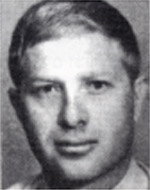Doron, Haim
Son of Frida and Yitzhak, was born on March 5, 1934 in Romania. 1949 he took a commanding officer course. In January 1952 Haim joined the IDF and served in the Israel Air Force, where he completed a professional course at the IAF Technical School and was assigned to an aircraft maintenance unit. As an outstanding athlete, Haim volunteered for a parachuting course in Haifa in September 1953. He completed his regular service in July 1954, but he did not leave the position in the IAF, but continued to fill it as a civil servant. In the same year, Haim participated in the Sinai Campaign, as an aircraft technician in the reserves, continued his work, passed a certification course for jet aircraft, and in November In 1961, he volunteered to serve in the regular army, with the rank of sergeant. He studied there for two months, and when he returned to Israel, he was promoted to the rank of major, and later to the head of the unit. In his role as a jet fighter, Chaim made an important contribution to the preparations for the Six-Day War. The opinion of his commanders was: “He fulfills his duties with dedication and efficiency, with discipline, with professional knowledge and is assisted in the performance of his work. After the Six-Day War Haim was recommended for an officers’ course, completed successfully in June 1968 and promoted to lieutenant. Two years later, he was promoted to captain. In 1973 Chaim was sent to a long-term training program in the United States. He fought in the Yom Kippur War and was promoted to major in May 1974. His long service in the Israel Air Force and his expertise in the aircraft created a desire to study in a special position – “He was an experienced accident officer and was sent to study in England and the US When he returned to Israel, Haim continued to serve in the Israel Aircraft Accident Investigation Team. On Passover, April 3, 1980, Chaim traveled from his base for a vacation, driving a car with his wife and Near Kibbutz Lavi, on the Tiberias-Nazareth road, he slipped in a curve and crashed into a civilian truck, which killed two soldiers, one of whom died of his wounds a week later, and was buried with his wife In the graveyard of Holon, where the words of King David’s lamentation were engraved on the death of Saul and Jonathan: “In their lives and death they did not separate.” He left behind two sons, a mother, a brother and a sister
